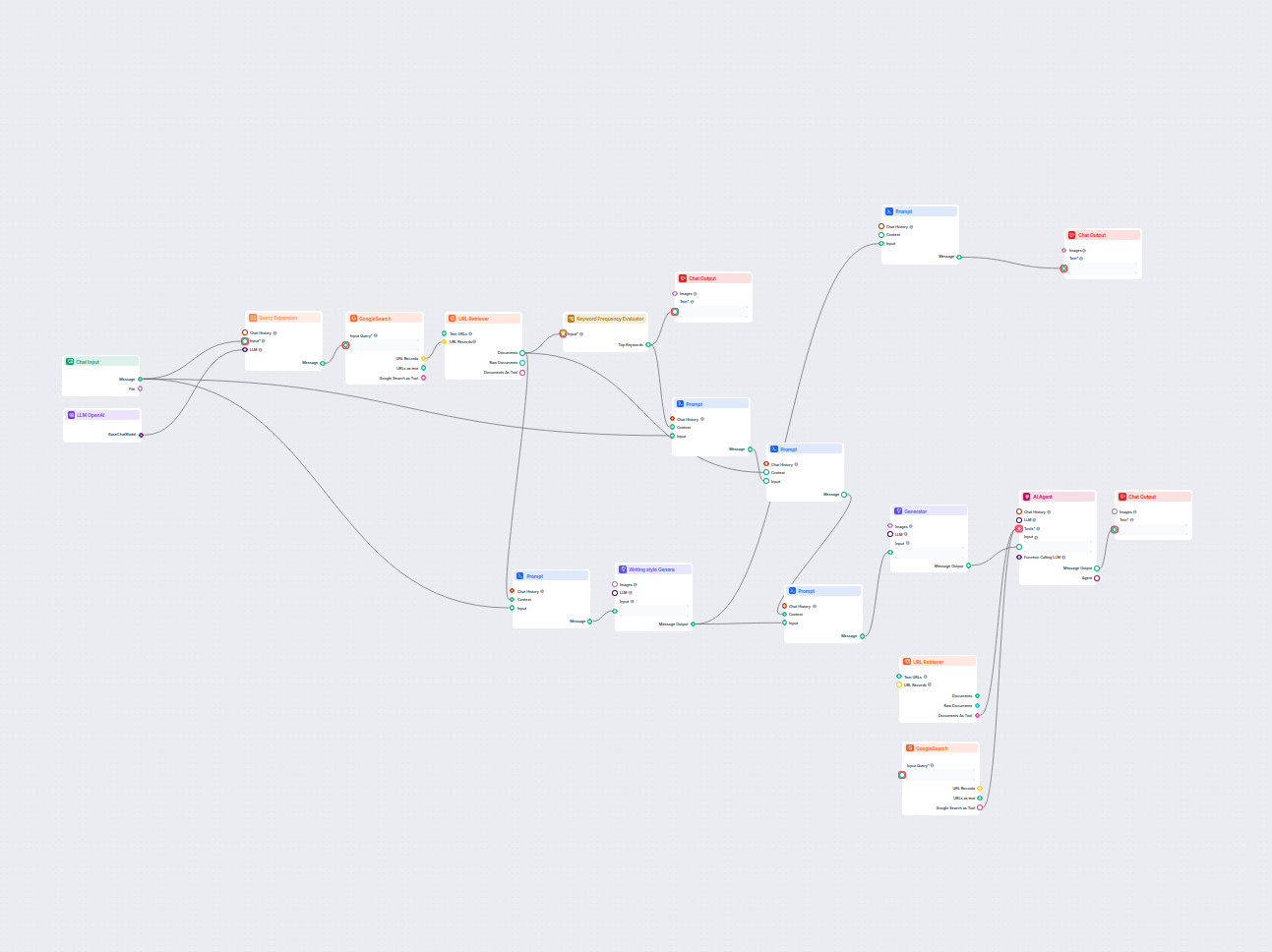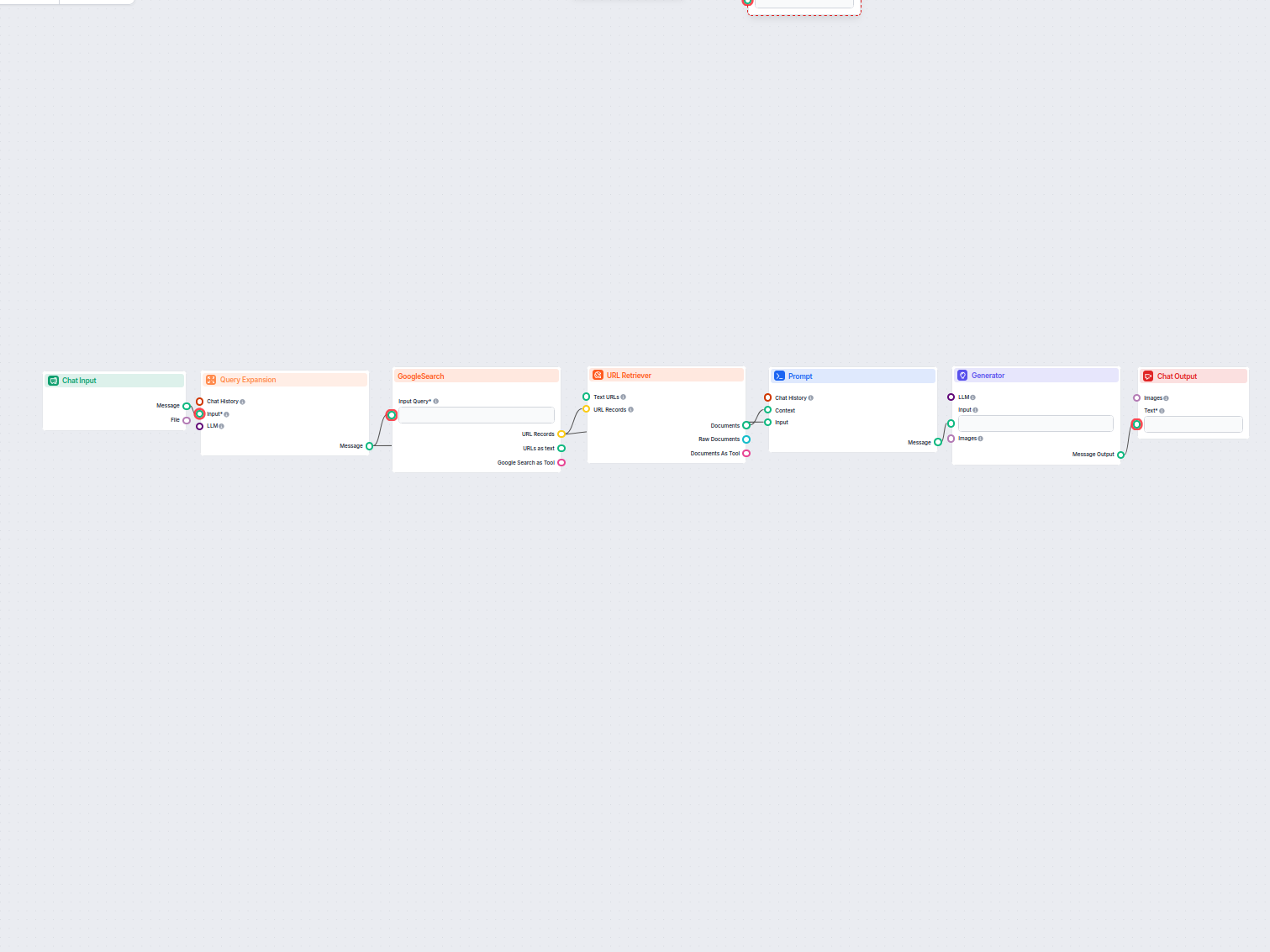Glossary Article Style Definition
Defines the writing style for glossary articles using input and context.
Generate in-depth, SEO-optimized glossary articles by leveraging AI and real-time web research. This flow analyzes the top-ranking content and writing styles, expands related queries, retrieves and analyzes relevant URLs, and then creates a comprehensive, well-structured article tailored for your keyword.

Flows
Defines the writing style for glossary articles using input and context.
Prompt to generate a 3000-word detailed glossary article using related keywords for context.
Prompt to generate a glossary article using information from the provided context, with emphasis on examples and use cases.
Prompt to analyze the writing style from input documents and generate a technical description for copywriting.
Prompt to instruct the LLM to use a previously defined writing style on the provided context.
Instructions/goals for the AI Agent to write a detailed 5000+ word glossary article and include source links, with instructions to avoid certain phrases.
Below is a complete list of all components used in this flow to achieve its functionality. Components are the building blocks of every AI Flow. They allow you to create complex interactions and automate tasks by connecting various functionalities. Each component serves a specific purpose, such as handling user input, processing data, or integrating with external services.
The Chat Input component in FlowHunt initiates user interactions by capturing messages from the Playground. It serves as the starting point for flows, enabling the workflow to process both text and file-based inputs.
Discover the Chat Output component in FlowHunt—finalize chatbot responses with flexible, multi-part outputs. Essential for seamless flow completion and creating advanced, interactive AI chatbots.
The Message Widget component displays custom messages within your workflow. Ideal for welcoming users, providing instructions, or showing any important information, it supports Markdown formatting and can be set to appear only once per session.
The Chat Opened Trigger component detects when a chat session starts, enabling workflows to respond instantly as soon as a user opens the chat. It initiates flows with the initial chat message, making it essential for building responsive, interactive chatbots.
Learn how FlowHunt's Prompt component lets you define your AI bot’s role and behavior, ensuring relevant, personalized responses. Customize prompts and templates for effective, context-aware chatbot flows.
Query Expansion in FlowHunt enhances chatbot understanding by finding synonyms, fixing spelling errors, and ensuring consistent, accurate responses for user queries.
FlowHunt's GoogleSearch component enhances chatbot accuracy using Retrieval-Augmented Generation (RAG) to access up-to-date knowledge from Google. Control results with options like language, country, and query prefixes for precise and relevant outputs.
Unlock web content in your workflows with the URL Retriever component. Effortlessly extract and process the text and metadata from any list of URLs—including web articles, documents, and more. Supports advanced options like OCR for images, selective metadata extraction, and customizable caching, making it ideal for building knowledge-rich AI flows and automations.
Analyze your texts to discover the most frequent and significant keywords using the Keyword Frequency Evaluator component in FlowHunt. Automatically extract top keywords, filter out common stopwords, and fine-tune results based on frequency, word length, and keyword overlap—ideal for text analysis, information extraction, and content summarization workflows.
FlowHunt supports dozens of text generation models, including models by OpenAI. Here's how to use ChatGPT in your AI tools and chatbots.
The AI Agent component in FlowHunt empowers your workflows with autonomous decision-making and tool-using capabilities. It leverages large language models and connects to various tools to solve tasks, follow goals, and provide intelligent responses. Ideal for building advanced automations and interactive AI solutions.
Explore the Generator component in FlowHunt—powerful AI-driven text generation using your chosen LLM model. Effortlessly create dynamic chatbot responses by combining prompts, optional system instructions, and even images as input, making it a core tool for building intelligent, conversational workflows.
Flow description
The Glossary Article Generator is a sophisticated workflow designed to automate the creation of comprehensive glossary articles. By simply providing a keyword (topic) and optional details, users can generate deeply researched, well-structured, and SEO-optimized glossary entries at scale. Below, we break down the major steps and mechanisms of the workflow to help you understand its structure and benefits.
| Step | Purpose |
|---|---|
| Query Expansion | Improve search coverage and intent matching |
| Google Search | Gather authoritative, current reference articles |
| Content Retrieval | Assemble a rich, relevant knowledge base |
| Keyword Analysis | Identify essential terminology and concepts for the glossary topic |
Writing Style Analysis: The workflow analyzes the structure, tone, and intent of the retrieved articles to synthesize a technical “writing style definition.” This includes:
Prompt Templates: Multiple prompt templates are created and chained, guiding the language model to:
| Feature | Benefit |
|---|---|
| Automated Web Research | Ensures articles are current and authoritative |
| Keyword Extraction | Aligns content with SEO best practices |
| Writing Style Synthesis | Matches tone and structure of top-ranking pages |
| Prompt Engineering | Guides AI to produce relevant, in-depth, and structured articles |
| AI Agent Enhancement | Produces articles of unmatched depth with source references |
| Scalable Output | Enables batch generation of glossary entries for large projects |
In summary, the Glossary Article Generator workflow empowers users to automate the creation of in-depth, SEO-optimized glossary articles, leveraging AI, automated research, and prompt engineering. This makes it an invaluable asset for anyone looking to scale high-quality content production efficiently.
We help companies like yours to develop smart chatbots, MCP Servers, AI tools or other types of AI automation to replace human in repetitive tasks in your organization.
Discover the benefits of using a Glossary Article Generator to create comprehensive, well-researched glossary pages. Ideal for educational and resource-based pl...
Generate unique content ideas and summaries using AI by researching top Google results for any keyword. Ideal for content marketers and creators to quickly disc...
Generate well-structured web page content based on the analysis of top-ranking Google pages for any keyword. This flow automates keyword research, extracts comp...
Cookie Consent
We use cookies to enhance your browsing experience and analyze our traffic. See our privacy policy.



